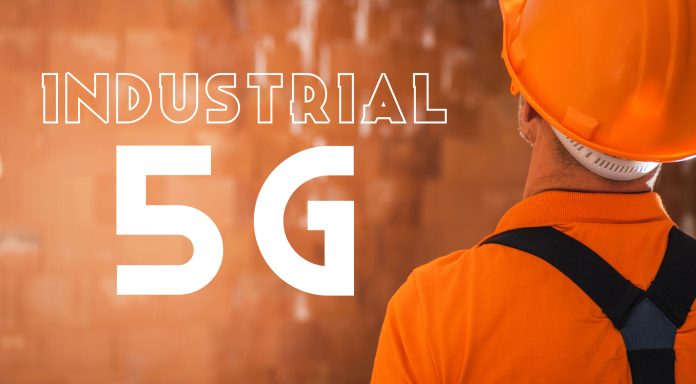This session, a couple of weeks ago at Industrial 5G Forum, was presented as a kind-of empire-strikes-back; an opportunity for established connectivity providers to put the boot into this new 5G rebel-force. It was supposed to provide a platform for the 5G bashers, who don’t normally get a look-in at these types of shows. Of course, it never goes quite like that. The only enterprise on the panel failed to show, and wanted to talk about how 5G slotted into its industrial-tech makeup, anyway; and the rest variously comprised representatives from the opposite low-power end of the IoT game, from the level-up end of the data streaming industry, and from the mobile fraternity itself.
There was no one from the Wi-Fi side, positioned by cellular in direct opposition to private 5G; there was no one to talk about Ethernet, or how to synchronise operational technology (OT) protocols over the top of a broadband cellular network. So this incoming industrial-grade 5G technology hardly got the kicking it was offered up for. But that is also not fair. Because Industrial 5G Forum, across the whole show, afforded plenty of airtime for enterprise customers and tech suppliers to vent about the 5G bluster – and, if the air did not exactly turn an idiomatic blue, then it was painted grey enough that the blue-sky nonsense about 5G as a zero-sum Industry 4.0 platform was also blotted out.
It has a developing role, clearly, but it ain’t the messiah – the conclusion went. And the panel that assembled for the first session to play ‘devil’s advocate’ were friendly and opinionated, and said as much. The following captures the essence of that first session – as told by Alper Yegin, chief technology officer at LoRaWAN industry mainstay Actility, and also vice chair at the LoRa Alliance; David Rolfe, head of product marketing for Volt Active Data, promoting a streaming and decisioning platform for industrial workloads; and Nitin Kumar, leading 5G core strategy and architecture for Bharti Airtel, the leading cellular provider in the fast-moving and giant-sized Indian enterprise market.
And if UK industrial thread manufacturer Coates was absent, called away at the last minute, then all of these others sell to enterprises, and know very well when and where (if and how) they want an industrial-grade version of 5G. A live recording of this session is available online now here.

1 | HYPED AND HUMBLED – WITH RISK OF PERMANENT DAMAGE
The big point – the cause of the trouble, the reason for the debate; which is remarkable because it is still remarked upon – is that 5G was overhyped and oversold, and is struggling now to live up to expectations. In reality, the question is more nuanced: will it ever deliver what it was supposed to? And rather: what was it supposed to deliver, anyway? Because most of the perceived fall-out is about hard-times for telcos, and their failure to monetise nationwide 5G infrastructure. It is less about the success of industrial 5G, as it is, and as it is supplied to enterprises – whether by telcos or any number of providers from parallel industries.
And industrial 5G, of course, is a developing technology, as discussed below. Most of the bluster and bombast that attended the initial marketing of 5G, as it was flushed into public (!) network infrastructure, actually hinted at its industrial-style application, which is only starting to be realised – and will take years to prove. David Rolfe at Volt Active Data warned that the hype could cost the telecoms industry, in the end. “I remember going to MWC and they had 5G-powered flying cars and brain surgery robots, and we haven’t seen any of that. The overselling has harmed the market perception – and it will create issues when [the telecoms industry] tries to sell whatever-6G-is.”
He hinted at technical issues with spectrum availability, and even weather conditions – even before such futuristic notions are dismissed as hair-brained in the first place. “It comes back to the fact that things were over-promised, and that people like you and me are now left to make what we’ve got work [with what is available],” he said. Disillusionment with 5G is rife, it seems, but also proper and important – for the technology proposition to mature and find its mark. Alper Yegin at Actility was completely reasonable in his assessment that 5G for high-power IoT is not more unique than LoRaWAN is for low-power IoT, but it sounded like a rebuke – in light of all the big claims about 5G.
Yegin commented: “Industrial IoT is one of the verticals we are catering to, and 5G has a place in industrial IoT. [But] it’s not the only game in town.” He talked up the flexibility of LoRaWAN, as a well-worn private networking solution, which also dovetails with public and community-based IoT infrastructure in unlicensed spectrum. But the real message was that the marketing is meaningless – that industrial vendors have known for some time already that you can’t push a technology, only a solution. “We’re not paying much attention to the 5G [marketing] – or to ‘0G’ or whatever-G for that matter,” he said, with a dig at old rival Sigfox, also, now branding itself as a ‘0G’ companion tech.
He went on: “Our focus now is exclusively on what the market needs, without worrying much about how marketeers frame it. [But] the awareness the 5G camp has created for private networks… in the industry is certainly helping with market-education. The LoRaWAN ecosystem is benefiting… But otherwise, we are heads-down, working on one customer, one site, one use-case at a time – and exponentially increasing our footprint.”
2 | PART OF A BIGGER REVOLUTION – WHICH WILL TAKE DECADES
The other point – also obvious, but also well-told – is that 5G is not just a cog in the wheel or ghost in the machine; it is that it is a developing network component in a developing digital solution. It will run alongside its parent-system for a while, turning in closer motion. But more than this, it is that the whole solution is being geared upwards constantly to drive a developing industrial revolution. Everything is in flux; nothing is still. At Industrial 5G Forum, Kumar at Bharti Airtel explained how industrial 5G, the small cog, is gathering speed and precision and polish with a reduced capability (RedCap) version on the horizon and an advanced-capability feature set (URLLC) in plain sight.
He said: “These are niche solutions, as of now. But they will… address a bigger [part] of the [industrial] market… to connect a huge number of sensors [on RedCap] and… [deliver] applications like autonomous vehicles and industrial automation [with URLLC]. A whole range of innovative new services [will be viable] that were not possible before… [and will] create a powerful ecosystem to unlock… 5G… [as] a mass market enterprise technology. I’m sure of that… These technologies will play a significant role.” Clearly, as per his job description, Kumar was more evangelical about the chances of 5G to topple every other industrial tech, but his point is entirely fair, that 5G is not the finished article.
Rolfe at Volt Active Data picked up the other point; that the whole digital change-game will take years anyway. He said: “It took 40 years for the introduction of electricity to improve productivity in the manufacturing industry. Because one electric-powered machine in a steam-powered factory doesn’t do much. [But] when everything is electric… then you see the benefits. We are only approaching 40 years since we introduced computers, networks, sensors into modern factories, and I think we’re reaching the same tipping point. And from an IoT perspective, 5G is a symptom, and not a cause. It is part of the bigger process [alongside] all these other technologies.”
He added, as a kind of pro-hype counter to the anti-hype message around 5G, that this “bigger process” will likely go further than anyone thinks. “We’re going to see radical changes in how [industry] works – [which will be] much bigger than we realise now. We are already thinking big but maybe we’re not thinking big enough. Because technology is ubiquitous… It used to be a sensor on the outside of the machine; now it’s on the inside… and the controls and decisions [happen in] milliseconds. So a real industrial revolution is here. And 5G is a wonderful supporting technology but it’s not magic.”
This article is continued here.

